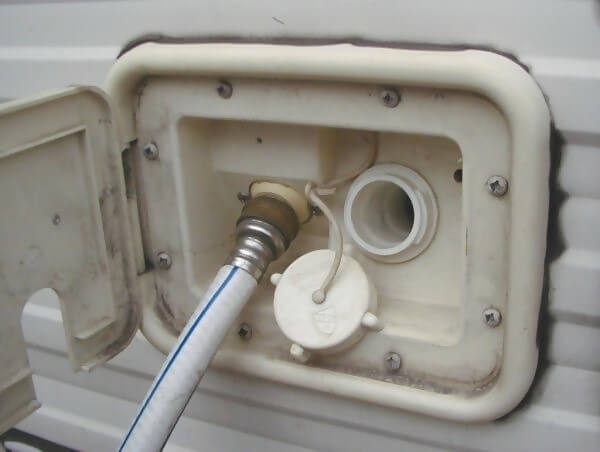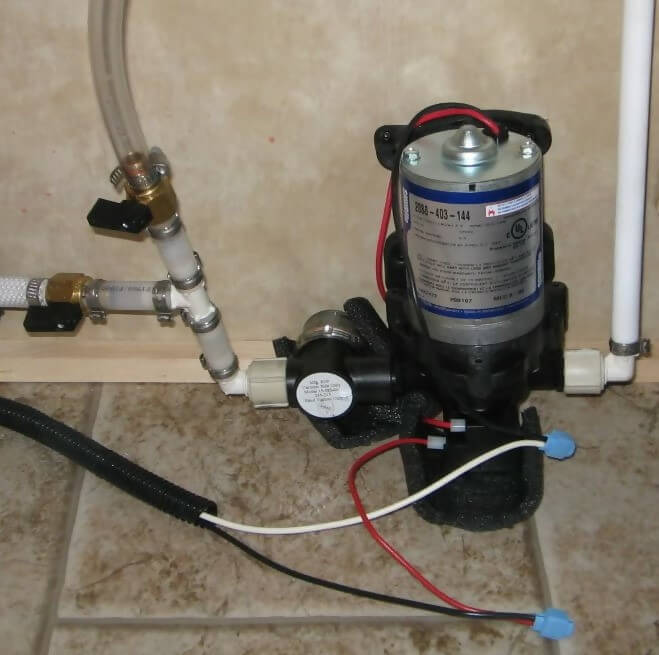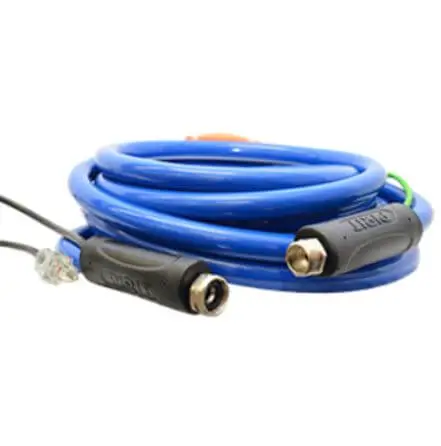Hey! This site is reader-supported and we earn commissions if you purchase products from retailers after clicking on a link from our site.
Most RV water systems work very similarly to those you will find in a standard home or apartment. However, the main difference is that in a fixed home when you turn on a faucet or flush a toilet, the potable water and waste appear and disappear with little or no effort on your part.
That said, living in an RV means that you will be responsible for supplying water and dealing with natural waste, and in this article, I’ll explain how your RV water system works and the key components that make it operate effectively.
Most factory-manufactured RVs such as class A or C motorhomes as well as towable trailers are equipped with a fresh water system and disposal system that separates the discarded water down to either black water or gray water.
Custom builds, restorations and most class B motorhomes are likely to have water systems with completely different designs, and in a future article, I will share some of my design ideas for your water systems should you be looking for an alternative to the conventional systems currently offered by most popular manufacturers.
Table of Contents
- First, Let’s Look at Your Fresh Water Supply
- What Is Grey Water?
- What Is Black Water?
- Final Thoughts
First, Let’s Look at Your Fresh Water Supply

If your RV has a fresh water tank it will likely have an outdoor fixture that is labeled “city water supply”. In this photo, you’ll see that this unit has a supplied fixture that fits two different sizes of hoses, but most RVs only are equipped with a single sewer hose fitting designed to fit a standard garden hose.
Related reading: RV water filters
Pro tip: You never know how far away you may need to park from a water supply, so I recommend having a 10-foot, 25-foot and 50-foot hose with you
Next, your fresh water will flow into the holding fresh water tank. Most fresh water holding tanks should have an overflow tube that will let you know when your water tank is full of water. However, if you are using a continuous supply of water, you will need to turn that valve off, so you are not leaking water through that valve while your system is pressurized, and you are camping in the same spot for several days.
Related reading: Sanitizing Your RV Water Tank
On the other hand, when you are leaving a site and want to top off your fresh water, you should open the valve to let you know when to stop filling your rig with water. This overflow valve will also provide a method for the air in your water tank to be released as the water fills it which eliminates your water tank from over-expansion and possibly rupturing.
In the photo example above, it’s likely that the owner of this RV has removed the cap to the other inlet, and this is allowing the air in the water tank to quickly be evacuated as the fresh water tank fills.

When you are boondocking or at a site without a continuous water supply you’ll need to rely on a water pump to supply your system with fresh water. Most manufactured RVs with a fresh water tank will have a 12-volt pump that draws water from your water tank when you want to access it.
Generally, these are wired so that when you turn on a faucet, the RV water pump will automatically activate and will run until you shut the faucet of the valve off. However, some systems are designed for you to manually turn the water pump on and off each time you access your freshwater system when not using your city water connection.
In the do-it-yourself water pump install pictured here, you’ll see that the intake from the RV’s fresh water tank is located on the right of the water pump and when distributed properly directs a line of cold water to the water heater and the other line distributes a cold water supply to the faucets located in the kitchen sink, bathroom sink, your shower, and toilet. Also, if your rig is equipped with an outside shower a cold-water line will run to that faucet as well.
The line that supplies the RV water heater continues after heating your water and supplies your kitchen and bathroom sink with hot water for cleaning, bathing, and cooking as well as your showers. Apart from a cold-water line that supplies your toilet with water for flushing, all of the lines should drain into a gray water-holding tank. It’s possible to get a tankless water heater. You can learn more about the best tankless water heaters here!
What Is Grey Water?
Gray water is the used water that is drained when doing things like dishes, bathing in your indoor shower, or even washing your hands or brushing your teeth in your bathroom. Gray water is not raw sewage, but it should be drained responsibly as some soaps are not environmentally friendly and can often contain small particles of food that could potentially attract bugs and vermin when drained directly onto the ground.
Additionally, small parts of human waste such as hair clippings from shaving and other grooming habits could wind up in your gray water tank and these are not environmentally friendly as well. For a better understanding of the purpose of your gray RV water system, I recommend visiting where I explain how that grey water system works and the best way to drain it and maintain it.
What Is Black Water?
Simply put, black water is raw sewage and it always needs to be disposed of properly. Most RVs that have an RV water system that includes fresh water and gray water tank will almost certainly have a black water tank for holding human waste.
In a previous article on black water tanks, I shared with you some of my thoughts on how best to understand that system as well as what you should do to properly access it and maintain it and I hope you’ll take a look at that article for some of your unanswered questions about your black water system.
Final Thoughts
Most manufactured RV water systems are similar regardless of the class or size of your RV. Of course, these vary by manufacture date and size of your RV, but as a rule, most modern RVs will always follow the simple rule of plumbing…crap runs downhill, and as long as you have a water supply and drainage system that follows this rule you should have an adequate RV water system.
There are times when smaller restoration campers or class B type motorhomes will have varied water supply and wastewater disposal designs, and in a future column, I hope to share some of the design changes and modifications I have made on numerous van builds and camper restorations I have made over the years for friends and clients. Also, make sure to read my guide on RV water system troubleshooting.
If you need some recommendations for your RV plumbing system, be sure to read these guides from Mike:
- Best RV water softeners
- Best RV water pressure regulator
- Best RV macerator pumps
- Best RV sewer hose
- Best RV portable waste tanks
In the meantime, my friends, thanks for reading, and as always…I hope to see you out there one day.


